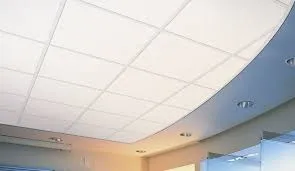- Afrikaans
- Albanian
- Amharic
- Arabic
- Armenian
- Azerbaijani
- Basque
- Belarusian
- Bengali
- Bosnian
- Bulgarian
- Catalan
- Cebuano
- Corsican
- Croatian
- Czech
- Danish
- Dutch
- English
- Esperanto
- Estonian
- French
- German
- Greek
- Hindi
- Indonesian
- irish
- Italian
- Japanese
- Korean
- Lao
- Malay
- Myanmar
- Norwegian
- Norwegian
- Polish
- Portuguese
- Romanian
- Russian
- Serbian
- Spanish
- Swedish
- Thai
- Turkish
- Ukrainian
- Uzbek
- Vietnamese
নভে. . 27, 2024 14:47 Back to list
Exploring the Benefits and Uses of Drywall Grid Systems in Construction
Understanding the Drywall Grid System A Comprehensive Overview
The drywall grid system is an essential component in modern construction and interior design, playing a vital role in the creation of suspended ceilings. This standardized framework allows for the integration of drywall panels in a systematic way, ensuring structural integrity while providing aesthetic appeal. Understanding the functions and advantages of the drywall grid system can help both homeowners and contractors make informed decisions regarding their construction projects.
What is a Drywall Grid?
A drywall grid, often referred to as a ceiling grid or suspension grid, consists of a network of metal or plastic supports that create a structural framework for drywall panels. It is primarily used in commercial and residential ceilings, allowing for an easy installation process and efficient use of space. The grid system is typically made up of main runners, cross tees, and wall angles, which combine to form a suspended ceiling that can accommodate various design elements such as lighting fixtures and acoustic panels.
Benefits of Using a Drywall Grid
1. Flexibility in Design The drywall grid system provides significant flexibility for designers and builders. It allows for the creation of unique ceiling profiles, including various heights and shapes, which can enhance the aesthetic appeal of any room. Additionally, the grid system can accommodate lighting fixtures, ventilation systems, and other utilities, maintaining both functionality and visual appeal.
2. Ease of Installation One of the primary advantages of using a drywall grid system is the simplified installation process. Contractors can easily measure, cut, and fit the framework, which saves time and reduces labor costs. The components of the grid are lightweight and manageable, enabling a quicker setup compared to traditional ceiling methods.
3. Acoustic and Thermal Benefits Drywall grid systems are designed to improve sound insulation and energy efficiency. When paired with appropriate drywall panels, the grid can effectively minimize noise transfer between rooms, which is particularly advantageous in commercial spaces such as offices and conference rooms. Furthermore, the space between the ceiling and grid can be utilized for insulation, contributing to better thermal management within the building.
drywall grid

4. Concealing Mechanical Systems In many construction projects, especially retrofit designs, there is a need to conceal ductwork, pipes, and electrical wiring. The drywall grid system provides an ideal solution for masking these elements, allowing for a clean and professional look while maintaining access for future maintenance.
5. Cost-Effectiveness When budgeting for construction materials and labor, drywall grid systems can be a cost-effective option. The durability of the grid, combined with reduced installation times, can lead to significant savings. Additionally, the ability to replace individual panels without dismantling the entire structure minimizes repair costs over time.
Types of Drywall Grid Systems
There are various types of drywall grid systems available, each designed to meet specific construction requirements. The two most common types are
- T-Bar Grid Systems This type involves T-shaped metal grid components that fit together in a simple and effective manner. It is widely used for standard drywall installations and allows for considerable flexibility in design.
- Z-Clip Systems Z-clips are an alternative to traditional grids, offering a more minimalist look. They are often used in projects where a seamless appearance is desired, allowing for continuous lines and smooth transitions.
Conclusion
In summary, the drywall grid system is an integral part of modern building practices that enhances both functionality and aesthetics. Its benefits—including design flexibility, ease of installation, acoustic advantages, and cost-effectiveness—make it a preferred choice among contractors and homeowners alike. As trends in construction continue to evolve, the importance of efficient and adaptable solutions like the drywall grid system will undoubtedly remain paramount. Whether you are embarking on a new construction project or considering a renovation, understanding the drywall grid's capabilities can lead to better decisions and outcomes.
-
Transform Interiors with PVC Gypsum Ceiling: A Stylish, Durable, and Moisture-Resistant SolutionNewsMay.19,2025
-
The Smart Interior Upgrade: Discover the Durability and Versatility of Gypsum Ceiling Access Panel SolutionsNewsMay.19,2025
-
The Smart Choice for Interior Design: Discover the Value of PVC Gypsum Ceiling SolutionsNewsMay.19,2025
-
Mineral Fiber Ceiling Tiles: The Smart Blend of Performance and AestheticsNewsMay.19,2025
-
Mineral Fiber Ceiling Tiles: The Superior Choice Over Gypsum for Sound and Fire SafetyNewsMay.19,2025
-
Mineral Fiber Ceiling Tiles: Eco-Friendly Strength and Style for Every CeilingNewsMay.19,2025







